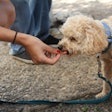At its annual meeting in August, the Association of American Feed Control Officials (AAFCO) rejected a label statement policy, exempted snouts from labeling requirements and clarified policy on various ingredients - among many other actions. In fact, the committee agendas were so full that my report and commentary on the meeting necessitate two parts. Part 2 will appear in the November issue.
Pitfalls of procedure
The annual meeting was held in Grand Rapids, Michigan, USA, starting with the general session. This is when AAFCO members as a whole vote on various committee proposals: the last step before a new model regulation, ingredient definition or similar proposal becomes enacted and appears in the next year's Official Publication.
This year there appeared to be a bit of confusion over the proposal to accept policy statement #29. Of great interest and importance to the petfood industry, this policy would allow some label statements regarding nutrient content of ingredients in products without prompting the need for supporting guarantees (e.g., a label claim "meat and bone meal contains calcium for healthy bones" would not require the label to bear a calcium guarantee provided specified conditions were met).
Unfortunately, the request for a vote mistakenly came from the Pet Food Committee, the original source of the proposal. The recommendation for acceptance by AAFCO should have come from the Model Bill & Regulations Committee, where the proposal presently sits. Ah, the pitfalls of parliamentary procedure! Anyway, the proposal was rejected. It will most likely be re-introduced for vote at the mid-year meeting in January 2008, which means it wouldn't appear in the Official Publication until 2009 at the earliest.
From snouts to selenium
On the positive albeit somewhat humorous side, the membership did officially accept the Pet Food Committee's recommendation for snouts to be listed among items exempt from labeling and registration requirements under policy statement #27. While snouts now join other designated animal parts (rawhide, bones, ligaments, hooves and ears) as acceptable exemptions, that status requires certain provisions be met (e.g., no nutritional claims).
Also, as "food," snouts must still meet applicable federal labeling requirements and may not be adulterated or misbranded. Finally, as a policy and not a regulation, this exemption is only a recommendation to states that have adopted the AAFCO Models. A state may choose to require these products meet its animal feed labeling and registration requirements regardless.
The Ingredient Definitions Committee always seems to have an abundance of items for vote at the general session, and this year was no exception. Of particular interest to the petfood industry is the acceptance of modification to the definition for selenium yeast. This ingredient is now acceptable for use in complete dog foods at levels not to exceed 0.333 parts per million selenium on a dry matter basis. It's not acceptable for use in cat foods at this time.
Potential amusement
Although there was a host of items for discussion, the only action by the Pet Food Committee that actually moved something forward was the proposal to add "pizzles" to the policy statement #27 exemption list. This term originally was proposed for inclusion in the policy along with snouts, but there was concern at the time about the perceived vulgar nature of the word.
While the term admittedly may be giggle-provoking to some, it is certainly less crude than any other synonym for that animal body part, at least of those that came to my mind! Assuming the Board of Directors agrees, I expect to see this item up for potentially amusing discussion at the general session next year.
Calorie statements
The Calorie Statement Working Group, charged last January to make recommendations to the Pet Food Committee on the proposal regarding mandatory calorie content statements on dog and cat food labels, did not complete its work. The group (of which I am an advisory member representing the American College of Veterinary Nutrition, the sponsor of the proposal) will continue its deliberation with the expectation of a report at the mid-year meeting.
On a related matter, a proposal to look at the issue of "weight-related terms" has also been sent to a newly formed working group for consideration. I'm in that group as an advisor as well.
The Pet Food Regulatory Workshop, originally planned for January 2008, has been postponed. This would be a day-long special session to help train new feed control officials and other interested parties in the nuances of the Model Pet Food Regulations. Unfortunately, time constraints of many committee members made January infeasible. Plans for holding the workshop in August 2008 were discussed.
Ingredient definitions
Although an informal Food and Drug Administration policy on the acceptable use of Yucca Schidigera extract in animal feeds has been in place for many years, the Ingredient Definitions Committee finally took steps to clarify this policy in the AAFCO ingredient definitions. While it may be used in any feed, claims for post-excretion manure odor control are only allowed for livestock and poultry feeds, not petfoods. The maximum permitted inclusion rate of Yucca Schidigera extract in any animal feed or petfood is 125 parts per million.
The committee also accepted modification to the definition for sodium hexametaphosphate that would allow for claims for tartar control when used as a coating in dry dog and cat foods. Officially codified as a sequestrant, use of this ingredient has been tolerated for years in petfoods (even those where the technical need for a sequestrant was dubious) as long as no direct claims regarding that ingredient and reduction of dental tartar accumulation were made.
Important to note: The modification of the definition for sodium hexametaphosphate to allow for these claims does not extend to other substances added for similar tartar control purposes.
Check back in November for part 2 from the AAFCO annual meeting.





.png?auto=format%2Ccompress&fit=crop&h=167&q=70&w=250)











